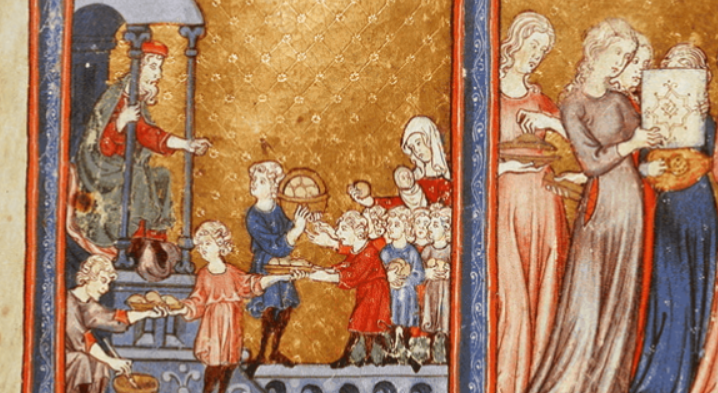
An illustration from the 14th-century Spanish haggadah known as The Golden Haggadah
Eggplant, a Beloved Sephardic Ingredient
The Song of the Eggplants
We also see evidence that eggplant was common in the Sabbath hamín (stew), which is referred to as “cazuela con berengena” or “eggplant casserole” in the poem “Johan poeta en vos venir,” written in the second half of the 15th century (ID0219). The association of Jews with eggplant even extended to Jews’ physical features. For example in “El Rey, señor de Fugena” (ID1509), converso poet and royal scribe Juan Alfonso de Baena was addressed with the taunt “eggplant eyes” or “ojos de berengena.”
Eggplant is also the subject of poetry and songs, like the cantiga de las merenjenas or “song of the eggplants,” which lists thirty-five ways to prepare the beloved eggplant. This song was orally transmitted for centuries and has also been preserved in 18th- and 19th-century manuscripts. In this cantiga, which is still sung today, almodrote figures high in the list, appearing in the third stanza:
La trecera las hacía bula Joya de Aksote:
las buía y las cocía y les sacaba el cocote
y el queso sin mancía y aceite con el bote
y las llamaba por nombre la comida de almodrote.
The third way is that prepared by Ms. Joya de Aksote:
she boiled them and cooked them after removing the stems
liberally mixing cheese and oil
and she called them by their name almodrote dish.
The cantiga has been studied and published in Elena Romero’s Coplas sefardíes: Primera selección (Córdoba: Ediciones El Almendro, 1988). It can be viewed in full at this link (without English translation).
Today, the almodrote recipes found in Sephardic kitchens typically include feta cheese or a mix of feta and a firmer cheese like gruyere and eggs, either boiled or raw, to thicken the sauce. They may also eliminate the garlic altogether and roast rather than boil the eggplant. The resulting dish is cooked in the oven and more like a homogeneous casserole or gratin of eggplant, egg and cheese than a relish that accompanies pan-fried eggplant. For a Moroccan recipe you can visit this blog. The New York Times published a recipe of a Turkish version, available here.
Links for Further Exploration
- Sephardic Studies at the University of Washington – Explore more Sephardic history and culture through articles and digital artifacts at the Stroum Center’s Sephardic Studies Program page.
- JewishStudiesHUB – Explore our innovative blog page with fresh views on Jewish topics by UW faculty and students. You can also access video clips and view new media projects.
© Ana Gomez-Bravo, 2014
The Converso Cookbook
Eggplant Song by Carmen Orte
Medieval Spanish Poem about Jewish Love of Eggplants
“En la boda del aljama /
non se comió peliagudo, /
ni piscado [sin] escama /
en cuanto’l marido pudo, /
sino mucha berengena /
y azafrán con acelguilla”
At the Jewish wedding /
no rabbit as eaten /
nor was fish [without] scales /
as much as the husband could prevent it /
Rather, they ate much eggplant /
and chard with saffron.
Source: “Per Gonzalez Per Gonzalez” ID2804
Sephardic Studies
Explore Sephardic history and culture more at the Stroum Center’s Sephardic Studies Program page.
Almodrote Recipe
Learn how to make almodrote.

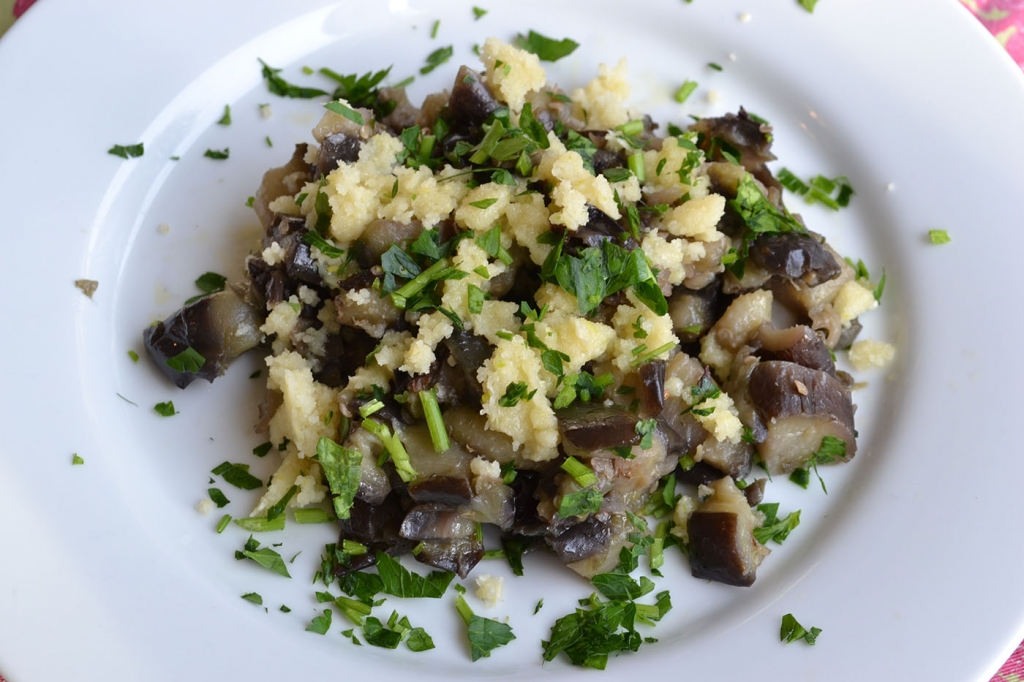

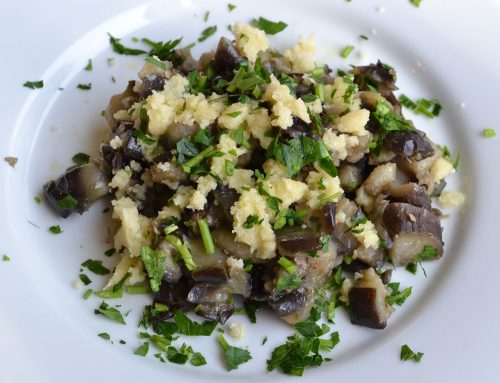
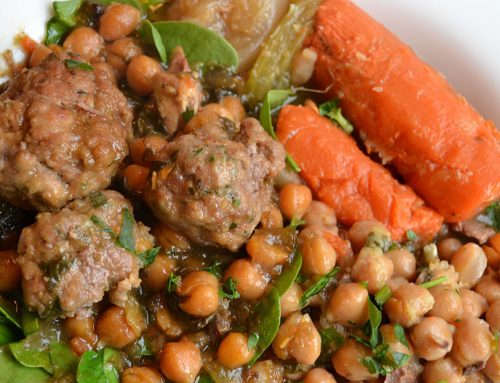
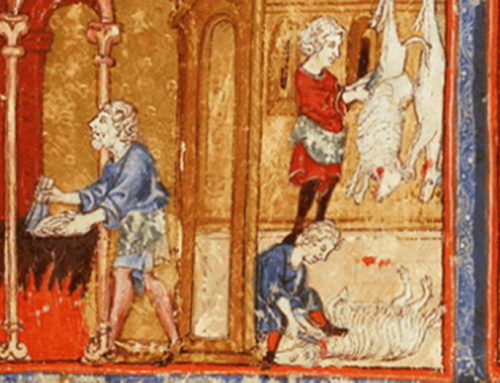

Leave A Comment